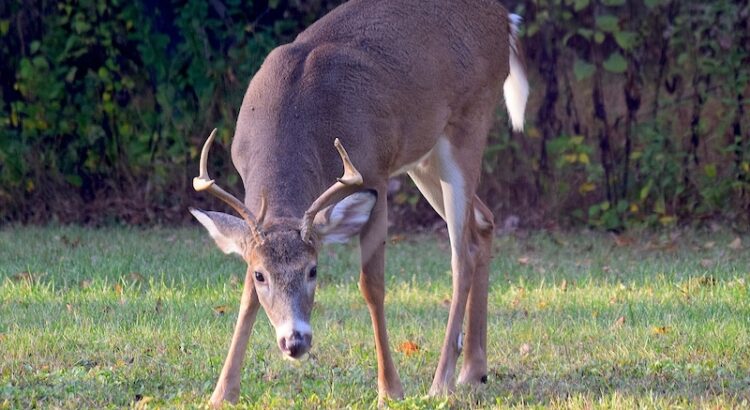Deer Proofing Your Landscape!
Deer damage home landscapes by feeding on garden and landscape plants, rubbing their antlers against trees, or scraping the soil around trees.
There are several options to reduce the damage: grow plants which deer find unattractive, fence the deer out, or use repellents. It should be stressed that hungry deer will eat almost anything.
Young, tender plants are generally more likely to be damaged than older, tougher plants. Don’t mix plants deer prefer among those they dislike. They’ll trample the plants they dislike to get to those they prefer.
The following lists attempt to ascribe preference ratings to some common landscape plants:
| Generally Preferred Plants | Sometimes Eaten | Generally Disliked |
| Apples
Arborvitae/white cedar Arrowwood Viburnum Birch Daylilies Dogwood Euonymus Garden lilies Hostas Hydrangea Impatiens Linden/basswood Yews | American highbush cranberry
Honeysuckle Douglas fir Forsythia Hazelnut Hemlock Juniper Maple Mountain ash Roses Spruce Sumac Wayfaring Tree Viburnum White Fir White Pine Young fruit trees | *Plants with thorns such as:
Barberry, Common buckthorn Russian olive Balsam Fir Anthony Waterer spirea Lilac Nannyberry Viburnum Potentilla Ural Falsespirea |
Male deer damage young trees by rubbing and scraping against them during the mating season, in an attempt to show their dominance. Male deer will also paw the soil around trees and urinate on the cleared area beneath an overhanging branch. The deer will chew and rub his scent on the branch, often breaking it. Pruning trees to remove any branches lower than 6 feet from the ground may help.
Barrier fences can reduce the number of deer which enter the area, though not 100% effective. For a small garden patch, use a 4-foot-high fence, or enclose the area with snow fence as deer avoid small, penned-in sites. For a larger lawn, a fence made of wire angled away from the yard creates both a psychological and physical barrier. Deer hesitate to jump over something in which they fear becoming entangled. The fence should reach 6 feet high and have a 30-degree angle to be effective.
Two basic types of deer repellents are available: contact repellents (applied to plants causing them to taste bad) and area repellents (placed in problem area and repel due to their foul odor).
For more information visit https://learningstore.uwex.edu/Assets/pdfs/A3727.pdf & https://learningstore.uwex.edu/Assets/pdfs/G3083.pdf




